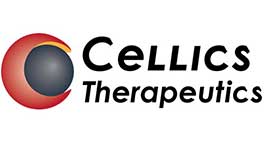

Cellics Therapeutics, San Diego, CA, USA
http://www.cellics.com/
Looking at drug development ‘upside down’
UC San Diego spinout Cellics Therapeutics is developing macrophage cellular nanosponges designed to soak up sepsis-causing toxins
CARB-X supports multiple approaches in the race against drug-resistant bacteria. Dr. Steve Chen, President and CMO of Cellics Therapeutics, a San Diego start-up that was awarded up to $15 million in October 2020, calls his company’s innovative approach to drug development ‘upside down.’
Rather than attacking the sepsis-causing endotoxins and inflammatory cytokinestoxins, Cellics is developing nanosponges – nanoparticles cloaked in the fragments of macrophage cell membranes – designed to soak them up, trap and neutralize them.
The concept was pioneered by UC San Diego nanoengineering professor Liangfang Zhang, who founded Cellics in 2014. The San Diego-based biotech has several macrophage and red blood cell nanosponges in the pipeline, including its lead candidate for MRSA pneumonia. The CARB-X award, is to support the development of Cellics’ macrophage candidate CTI-111, aimed at sepsis caused by drug-resistant Gram-positive and Gram-negative bacteria.
“Sepsis in general has been a very difficult disease to treat,” Chen said. The condition is caused by the body’s response to an infection, and affects roughly 1.7 million adults in the US each year, according to the CDC. Of those, an estimated 270,000 people die each year from sepsis.
The CARB-X grant will be used to scale up production of the nanosponges, and develop an animal model for testing. Cellics is eligible for $3.94 million, plus another $11.05 million down the road if milestones are met. That funding could carry the project all the way through a Phase I study, Chen said.
Cellics aims to bring the sepsis candidate to the clinic in the next two years. It would be administered by IV in combination with antibiotics and other medicines.
“Cellics is dedicated to the development of biomimetic nanomedicines to treat life threatening diseases. Our macrophage nanosponge technology leverages the natural receptors on human macrophage membranes to neutralize bacterial pore-forming toxins, endotoxins, and inflammatory cytokines that underlie sepsis,” said Chen.
The CMO believes the nanosponges could also be used for a range of other illnesses, from inflammatory bowel disease to Covid-19. The concept is the same — instead of latching onto a host cell, the virus would latch on to a nanosponge and become neutralized. Chen said to imagine throwing a dart at a pebble: You aren’t very likely to hit it. But if the pebble is scattered into a bunch of tiny particles (aka the nanosponges), the dart (the virus) is likely to hit one. The company may one day have an oral formulation, or even a topical one, he added later.
In a paper published in Proceedings of the National Academy of Sciences in 2017, Zhang collaborated with the laboratory of Professor Victor Nizet at UC San Diego School of Medicine and Skaggs School of Pharmacy and Pharmaceutical Sciences to show that macrophage nanosponges can safely neutralize bacterial molecules that play a key role in sepsis, called endotoxins, as well as pro-inflammatory cytokines produced by the immune system. In this work, treatment with macrophage nanosponges protected mice from lethal sepsis caused by E. coli bacteria. The CARB-X award further validates the potential of macrophage cellular nanosponges to neutralize diverse inflammatory factors that play key biological roles in sepsis and other human diseases. As demonstrated in another recent study from the Zhang laboratory, this work could likewise position macrophage cellular nanosponges as a treatment for COVID-19 given its ability to neutralize SARS-CoV-2 and cytokine storm that the virus can cause.
“Cellics is dedicated to the development of biomimetic nanomedicines to treat life threatening diseases. Our macrophage nanosponge technology leverages the natural receptors on human macrophage membranes to neutralize bacterial pore-forming toxins, endotoxins, and inflammatory cytokines that underlie sepsis,” said Dr. Steve Chen, president and chief medical officer, Cellics Therapeutics, Inc.
Published on October 26, 2020


